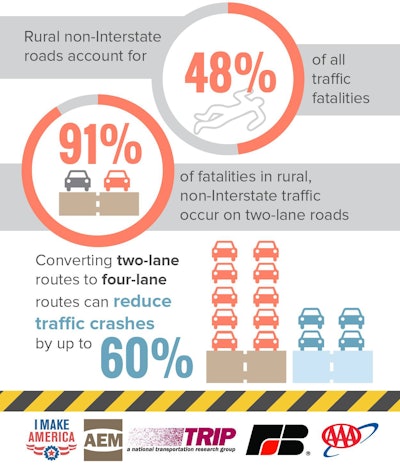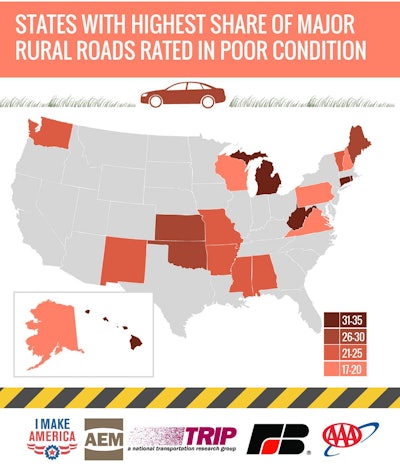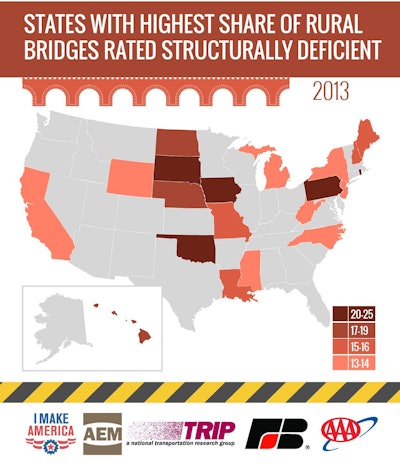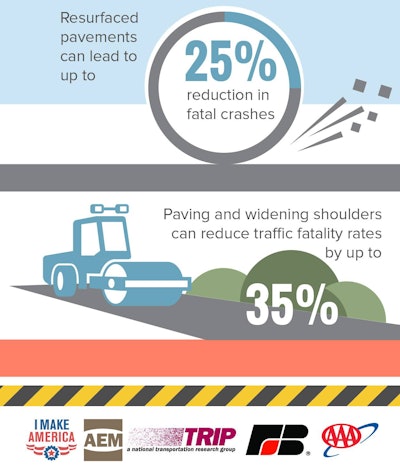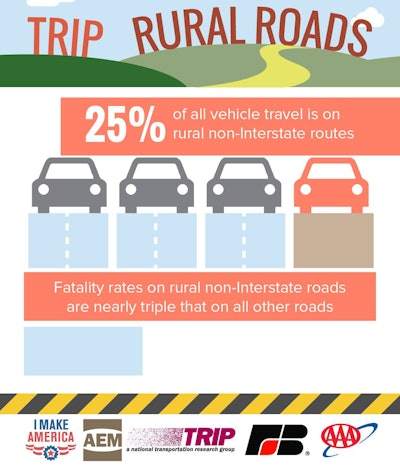
The reports, “Rural Connections: Challenges and Opportunities in America’s Heartland,” looks at the percentages of rural roads in poor conditions, deficient rural bridges and fatality rate of rural roads in each state. It also defines “rural America” as counties lacking an urban area of at least 50,000 in population or lacking a large commuting flow to an urban county.
According to the report, 66 cities with populations of 50,000 or more have no direct access to the Interstate Highway System, while access in rural communities has been further reduced by the abandonment of more than 100,00 miles of rail lines. Additionally, 60 percent of rural counties in the U.S. have public transportation, and 28 percent of those counties have very limited service.
Another issue is the number of traffic fatalities. According to the report, traffic crashes and deaths on rural roads occur nearly three times more than on all other roads. The report notes that in 2012, non-Interstate rural roads had a traffic fatality rate of 2.21 deaths per 100 million vehicle miles of travel (VMTs), while all other roads had 0.78 deaths per 100 million VMTs. Non-Interstate rural roads accounted for a quarter of all VMTs in the U.S. in 2012, and crashes on these roads resulted in 48 percent (16,161 fatalities) of the nations’ 33,561 traffic deaths in the same time period.
The TRIP report notes that low-cost safety design improvements such as rumble strips, improved signage, new lighting and skid resistant surfaces, among other changes, can reduce serious crashes on rural roads. Other, more costly improvements such as adding turn lanes, widening lanes, adding shoulders and more are also mentioned in the report.
Another concern is the number of deficiencies on rural roads, highways and bridges. The report notes that 15 percent of the nation’s major rural roads were rated in poor condition in 2012, and 40 percent were rated in fair condition.
During that time period, Connecticut had the highest percentage of rural roads in poor condition, with 35 percent of its rural road rated poor. Rhode Island and West Virginia followed with 33 percent of rural roads in poor condition in each state.
In 2013, 12 percent of the rural bridges in the U.S. were structurally deficient (the bridge deck, supports or other major components have significant deterioration) and 10 percent were functionally obsolete (they no longer meet current highway standards due to narrow lines, inadequate clearances or poor alignment).
In 2013, Pennsylvania and Rhode Island had the highest percentages of structurally deficient rural bridges, each at 25 percent.
According to the report, America needs to adopt transportation policies that improve connectivity, safety and conditions on rural roads.
TRIP — along with the American Association of State Highway and Transportation Officials (AASHTO), the National Highway Cooperative Research Program (NCHRP), the Council of State Governments (CSG) and the Ports-to-Plains Alliance — offer recommendations for improving access and connectivity in small communities and rural areas; improving rural traffic safety; and improving the conditions of rural roads, highways and bridges.
To read the full report, click here.
See below for more infographics related to the report.
